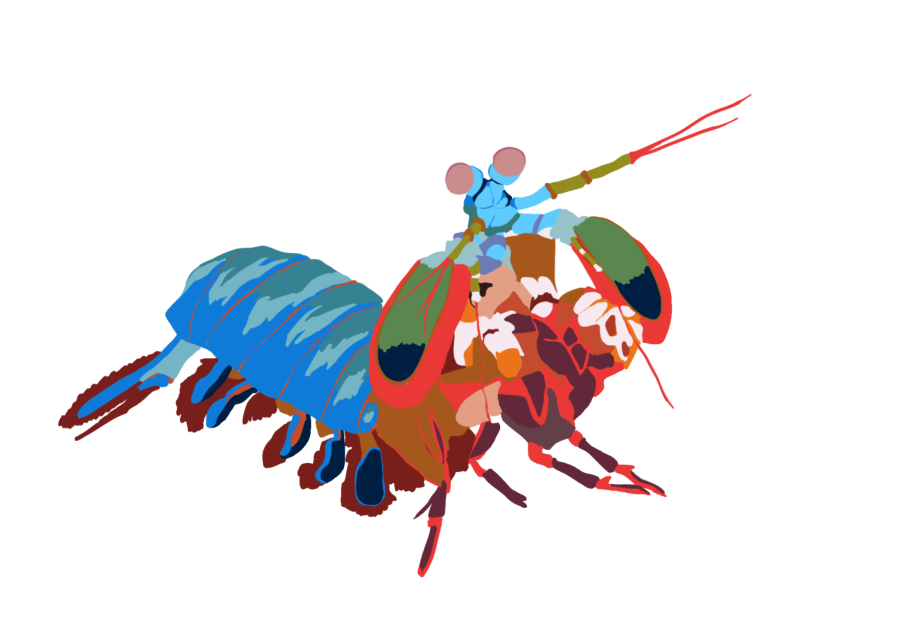Creature feature
peacock mantis shrimp
Syd Barrett
Though small in size, this underwater creature packs a powerful punch. The mantis shrimp can punch so fast that it shatters glass.
March 22, 2023
Big things can often come in small packages. That is especially true for the creature of this feature, the peacock mantis shrimp.
The peacock mantis shrimp is known by many names: clown, harlequin and rainbow mantis shrimp, however, its scientific name is Odontodactylus Scyllarus.
They are carnivorous, preferring to eat crabs and mollusks, and have eyes that protrude from their head that can move independently.
The peacock mantis shrimp reproduces by internal fertilization. The females then carry the eggs on their claws while protecting and cleaning them. Some peacock mantis shrimp may even engage in monogamous pair bonds, what we would think of as marriage, according to Oceana.
Their eyes have the unique ability to see and detect many more colors than humans can. Humans have three color cones in our eyes: red, green and blue. Whereas the mantis shrimp has 16.
This means they can see faster; however, they can’t combine them into blended colors. They can see polarized light. In the Atlantic, writer Sarah Zhang describes light waves as strings with one end attached to a wall, detailing the difference between polarized light and regular light.
“You can imagine light waves as a bunch of different strings that each have one end attached to a wall. If you shake them randomly, they will vibrate in every direction; that is how non-polarized light behaves. If you only shake the strings up and down, restricting vibrations to one direction, then that is like vertically polarized light,” Zhang said.
Not only can they see polarized light, but they can see six different types of it. Vertical, horizontal, two diagonals and two circulars, when light waves spiral in both clockwise and counterclockwise patterns.
Scientists have even developed a “mantis-shrimp-inspired” camera, allowing us to see the world through their eyes.
This shrimp sports a multi-colored shell making it deserving of the nicknames clown, peacock and rainbow. While the title of peacock comes from the greens and blues reflected on the males’ shells, females are mostly red.
Their brightly colored shells make them desired by some in the private aquarium community. However, because individuals will eat fish and other invertebrates, most aquarists would rather avoid them.
Mantis shrimp can be anywhere from 1.2 inches to 7.1 inches in length. However, don’t mistake their size for weakness. These pint-sized wonders pack quite the punch.
These heavy hitters punch fast and hard. Their punches are 50 times faster than the blink of an eye and are hard enough to shatter glass.
They not only use their power-packed punch to find their favorite meals, they also use them to defend their homes. They live in burrows in the shallow parts of the Western Pacific and Indian oceans. They hover near the entrance of their burrows and punch any creature they feel gets too close.
There is one predator, however, they can’t keep their homes safe from, and it’s humans. We have put their homes in jeopardy with pollution, fishing using dynamite and poisons, coral mining and bleaching. To help combat the negative effects of human interaction with the ocean, you can donate to places like Oceana or Ocean Conservancy. You can also take steps to help the ocean at home by talking to local legislators, getting educated about the ocean, reducing your plastic use and being careful about debris when near bodies of water.







